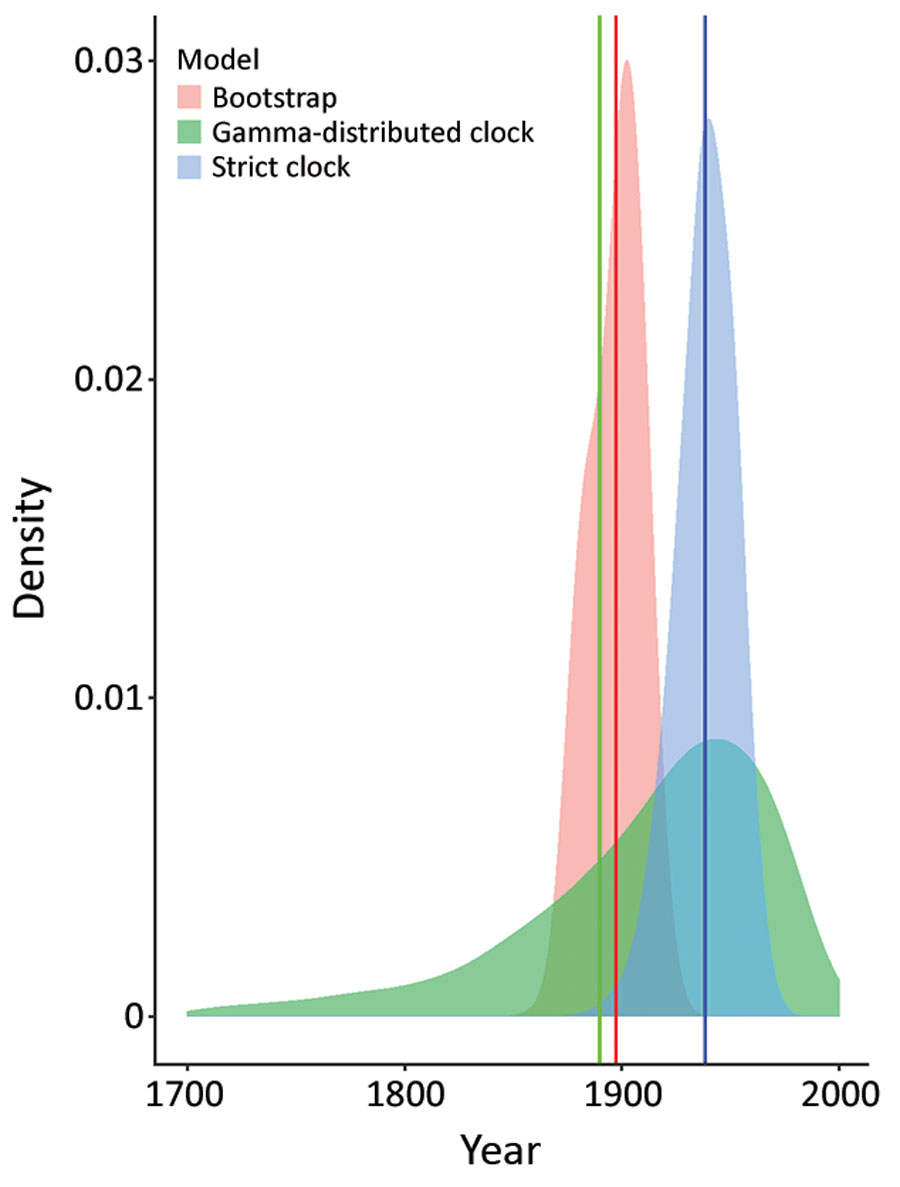Volume 28, Number 6—June 2022
Research
Geographic Origin and Vertical Transmission of Leishmania infantum Parasites in Hunting Hounds, United States
Figure 3

Figure 3. Molecular clock estimates of the date of the most recent common ancestor of US hound Leishmania samples. Shaded densities are normal kernel densities for the bootstrap estimates from PATHd8 analysis and from posterior samples for strict clock and relaxed clock with uncorrelated gamma-distributed rates in BEAST version 1.10.4 (https://beast.community). These distributions in each case represent the estimated uncertainty in the divergence date of Leishmania infantum isolates from US hounds and from Europe. Vertical lines in the same colors are at the means of each distribution.
1These senior authors contributed equally to this article.
Page created: April 12, 2022
Page updated: May 22, 2022
Page reviewed: May 22, 2022
The conclusions, findings, and opinions expressed by authors contributing to this journal do not necessarily reflect the official position of the U.S. Department of Health and Human Services, the Public Health Service, the Centers for Disease Control and Prevention, or the authors' affiliated institutions. Use of trade names is for identification only and does not imply endorsement by any of the groups named above.